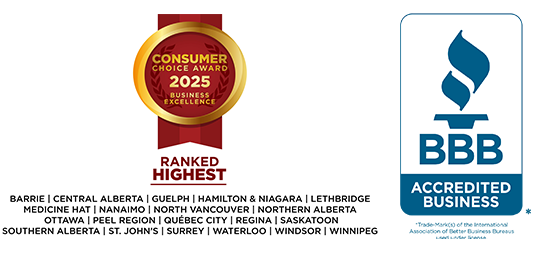VANCOUVER, BC – October 6, 2025 – British Columbians’ financial vulnerability is intensifying as persistent economic uncertainty, concerns about borrowing costs, and employment anxiety weigh on household confidence. Faced with mounting financial pressure, many British Columbians are making difficult trade-offs in their day-to-day lives. According to the latest MNP Consumer Debt Index, more than half (51%, -2 pts YoY) say they are grocery shopping strategically — using meal plans, bulk buying, coupons, and price matching — while two in five have stopped dining out or ordering takeout (40%, +3 pts). At the same time, three in 10 (30%, +3 pts) report cutting back on utility consumption to save money.
Beyond these everyday cutbacks, some are resorting to harsher measures. Nearly one in five (17%) are delaying or skipping medical, dental, or prescription care, underscoring how financial strain is affecting households’ well-being. Additionally, more than a quarter (27%, -8 pts) say they are eating less to make ends meet.
“There are some households that are being stretched to their breaking point,” says Linda Paul, a Licensed Insolvency Trustee with MNP LTD in the Lower Mainland. “When people start scaling back on food, health care, or other essentials, it’s not just about budgeting anymore — it’s about daily survival. That level of pressure can have a significant emotional impact.”
Even with these sacrifices, financial cushions are shrinking. The average amount British Columbians have left over after monthly expenses has fallen to $816 from $891. At the same time, more than two in five (44%, -2 pts) British Columbians report they are within $200 of being unable to pay their bills each month.
“When there’s so little left at the end of the month, even a small, unexpected cost can force people to rely on credit that comes with steep borrowing costs,” adds Paul. “At that point, debt can quickly snowball and become overwhelming. The longer people wait to get help, the more difficult it can feel to find a way forward.”
Job insecurity and AI concerns add to financial strain
British Columbians’ confidence in their ability to cope with a job loss has rebounded this quarter, increasing a significant 13 points. However, the score remains net negative (-7), indicating persistent employment anxiety amid a softening job market. Against this backdrop, nearly half (45%) worry that artificial intelligence (AI) could negatively affect their job or income.
“AI is adding a new dimension of financial anxiety in B.C.,” says Paul. “When people already feel stretched thin and underprepared for a loss of income, the thought that their jobs could be threatened by technology only deepens that sense of uncertainty.”
Nearly half, (48%) of British Columbians report having less than six months of emergency savings to withstand a disruption, highlighting just how exposed many households would be if their income were reduced or lost.
Debt concerns ease from record highs — but optimism remains weak in B.C.
More British Columbians are viewing their debt situation positively this quarter, with a third (37%, +4 pts) rating it as “excellent.” Still, nearly one in five (18%, -1 pt) describe their situation as “terrible,” underscoring the divide in financial confidence across the province. Although the Bank of Canada held interest rates at 2.75 percent during the survey period and cut to 2.5 percent shortly after, three in five (60%, -7 pts) British Columbians said they desperately need rates to go down. After reaching record-high levels last quarter, British Columbians who worry about their ability to repay debt even if rates decline (39%, -19 pts), and those who fear future increases could push them toward bankruptcy (43%, -12 pts) has fallen back to benchmark levels. Yet, optimism remains limited: fewer this quarter expect their debt situation to improve in the next year (23%, -5 pts), or over the next five years (31%, -5 pts).
“For those already carrying significant debt, small shifts in interest rates don’t solve the bigger issue,” explains Paul. “Relief from borrowing costs may ease pressure for a while, but the underlying debt remains. Reaching out to a Licensed Insolvency Trustee doesn’t need to be a last resort — it’s a smart way to get unbiased advice about the debt relief options available before things get worse.”
Despite cost-cutting efforts, some British Columbians feel they are running out of room to manoeuvre. More than a quarter (28%, -1 pt YoY) report having no plans to save more in the next 12 months, and only 14 percent (-4 pts) intend to create or revise a household budget. British Columbians are also the most likely among all provinces (15%, +3 pts) to consider relocating to more affordable housing and one in 10 say they even plan on eating less (10%, -1 pt) to save money. Additionally, 12 percent (-2 pts) plan to reduce utility consumption over the next year — a concerning sign as households head into the winter months.
“When households start considering extreme steps like relocating or cutting back on essentials, it shows just how overwhelming the pressure has become,” says Paul. “At that point, many people don’t realize there are other solutions available. That’s where Licensed Insolvency Trustees can step in — to explain the options, provide unbiased advice, and help chart a way forward.”
Licensed Insolvency Trustees provide free, confidential consultations and are the only federally regulated debt professionals authorized to administer consumer proposals and bankruptcies. With more than 200 offices across the country, MNP LTD’s team of Licensed Insolvency Trustees deliver local, personalized and non-judgmental guidance to help Canadians understand their options and take the first step toward lasting financial stability.
About MNP LTD
MNP LTD, a division of the national accounting firm MNP LLP, is the largest insolvency practice in Canada. For more than 50 years, our experienced team of Licensed Insolvency Trustees and advisors have been working with individuals to help them recover from times of financial distress and regain control of their finances. With more than 240 offices from coast-to-coast, MNP helps thousands of Canadians each year who are struggling with an overwhelming amount of debt. Visit MNPdebt.ca to contact a Licensed Insolvency Trustee or use our free Do-it-Yourself (DIY) debt assessment tools. For regular, bite-sized insights about debt and personal finances, subscribe to the MNP 3-Minute Debt Break Podcast.
About the MNP Consumer Debt Index
The MNP Consumer Debt Index measures Canadians’ attitudes toward their consumer debt and gauges their ability to pay their bills, endure unexpected expenses, and absorb interest-rate fluctuations without approaching insolvency. Conducted by Ipsos and updated quarterly, the Index is an industry-leading barometer of financial pressure or relief among Canadians.
Now in its thirty-fourth wave, the Index has fallen by two points from last quarter to 86 points. Visit MNPdebt.ca/CDI to learn more.
The data was compiled by Ipsos on behalf of MNP LTD between September 4 and September 9, 2025. For this survey, a sample of 2,001 Canadians aged 18 years and over was interviewed. Weighting was then employed to balance demographics to ensure that the sample's composition reflects that of the adult population according to Census data and to provide results intended to approximate the sample universe. The precision of Ipsos online polls is measured using a credibility interval. In this case, the poll is accurate to within ±2.5 percentage points, 19 times out of 20, had all Canadian adults been polled. The credibility interval will be wider among subsets of the population. All sample surveys and polls may be subject to other sources of error, including, but not limited to, coverage error and measurement error.



